The “Technologies of Interaction” and the Rise of Civilization
Episode #7 of the course Technologies that transformed humanity by Richard L. Currier, PhD
Innovations in travel, trade, and the written word enabled agricultural people to interact across previously unbridgeable spans of time and space, ultimately leading to the development of cities and the birth of urban civilization.
River Valleys: The “Cradles of Civilization”
Humanity’s first civilizations all arose in the fertile valleys of the world’s largest rivers: the Nile, Tigris, and Euphrates rivers of the Middle East; the Indus river of northern India; and the Yellow and Yangtze rivers of Eastern China. There were important reasons why all these great river valleys became the first “cradles of civilization.”
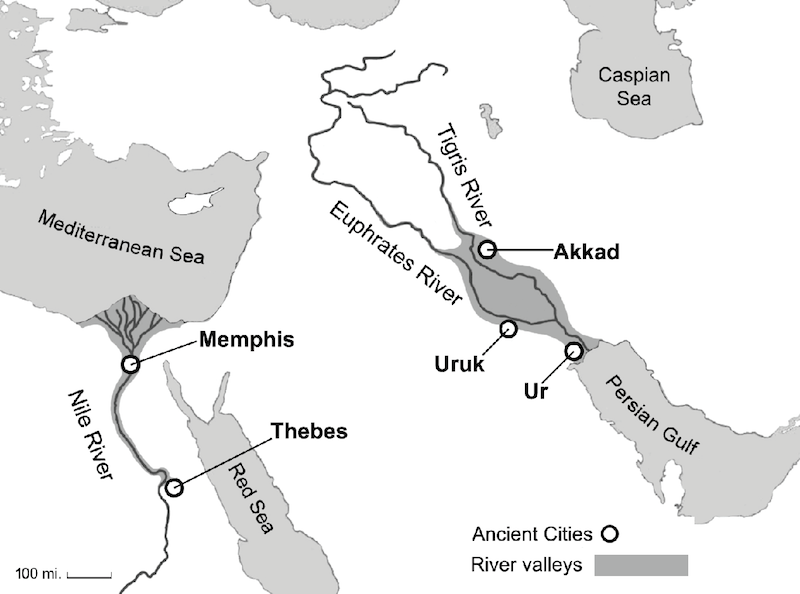
(1)

(2)
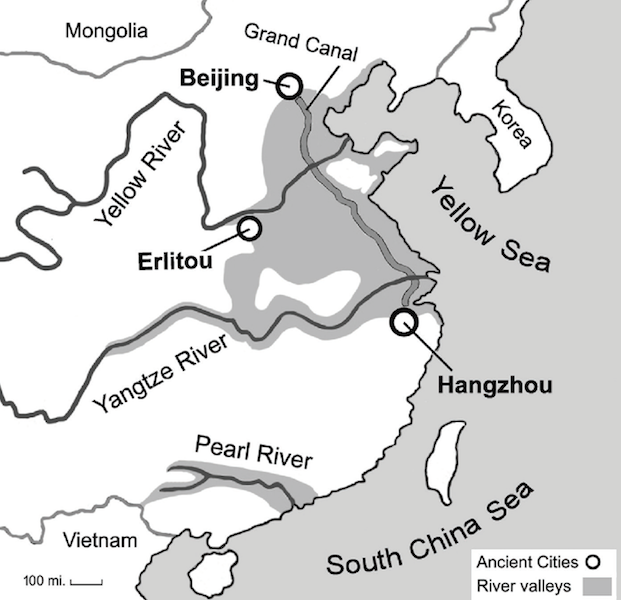
(3)
The circles on these maps show the locations of the ancient world’s first cities, in the Middle East (1), Northwest India (2), and China (3).
All these rivers were flooded annually by the spring or summer rains, leaving fresh deposits of new soil along their banks. Thus, these fertile river valleys produced enough surplus food to feed rapidly growing populations. Finally, these large, slow-moving rivers served as natural highways for boat traffic that linked the many towns and villages along their banks.
The Technologies of Interaction
Although nomadic hunter and gatherers had long used small rafts and canoes, the farmers who prospered in the great river valleys soon began building very large river boats and barges, which they used to ship loads of grain, hides, timber, animals, and pottery from one settlement to another. A few people sailing a single barge or river boat could move heavy cargoes long distances, while to move such loads over land required dozens of pack animals or human porters.
Wheels for wagons and bridles for horseback riding were originally invented by the nomads of Central Asia, but they were quickly adopted by the civilizations of the river valleys. Before long, oxcarts, wagons, chariots, and horseback riders vastly expanded travel and trade over ever-larger geographical areas.
Finally, as some villages grew into towns with thousands of people, the largest towns began to dominate the areas around them both economically and militarily. In time, these towns became the seeds of humanity’s first cities, ruled by hereditary kings, protected by massive fortifications, and filled with monuments, palaces, and temples.
The Many Origins of the Written Word
Writing was invented many times in many places, and it enabled people to send messages over great distances and record information for posterity for the first time. Writing was one of the key technologies of interaction that made civilization possible.
• By 3000 BC, the Mesopotamians had invented “cuneiform writing,” pressing triangular marks onto soft clay tablets.
• By 2800 BC, the Egyptians began drawing “hieroglyphics” on sheets of papyrus and carving them into temple walls.
• By 2700 BC, Indus Valley civilizations began writing on cotton cloth using the symbols of the “Indus script.”
• By 3000 BC, the first Chinese characters appeared on pottery vessels, and by 1500 BC, they had evolved into the “oracle bone writing”—carved into bones and tortoise shells—that were the precursors of today’s Chinese characters. (The cracks that appeared when these objects were thrown into a fire were believed to foretell the future.)
• By 500 BC, the Maya civilizations of Guatemala and Mexico had developed one of the most complex of all written languages. Hundreds of symbols were combined into thousands of “glyphs” that were painted on wooden tablets and carved into the stone walls of their temples.
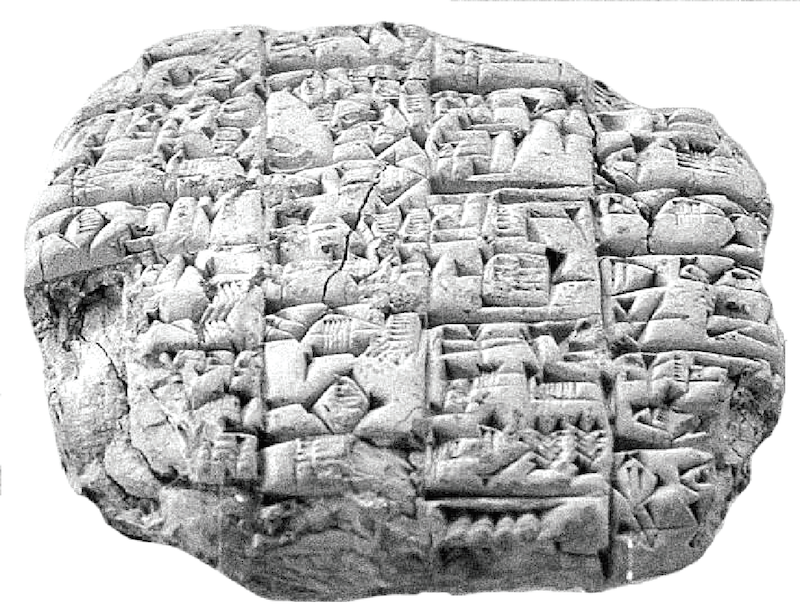
Mesopotamian cuneiform.
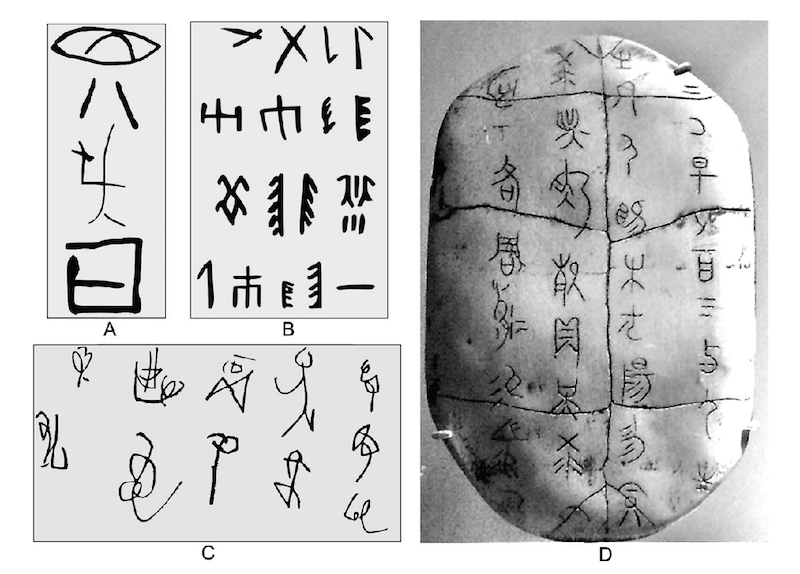
Ancient Chinese and oracle bone writing.
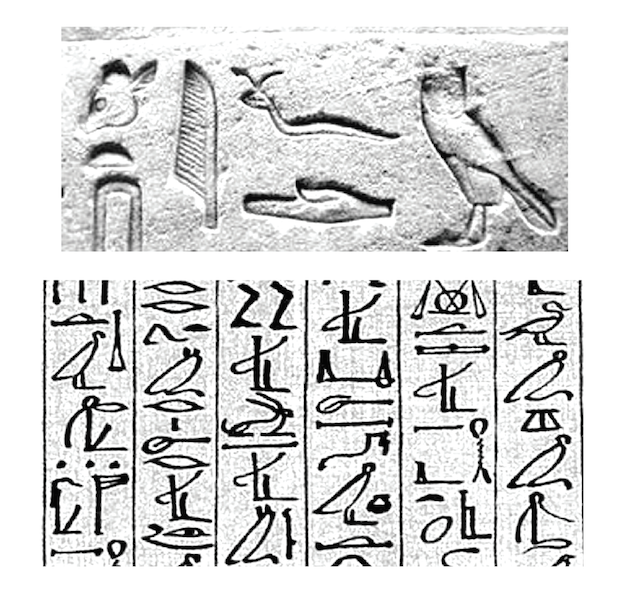
Egyptian hieroglyphics.

Indus Valley script.

Mayan hieroglyphics.
Five thousand years ago, ancient civilizations were already developing the technologies and institutions that eventually became the foundations of today’s world.
Ancient civilizations developed drama, poetry, music, painting, and sculpture. They invented mathematics, astronomy, philosophy, history, biology, and medicine. They created the technologies of masonry, architecture, carpentry, shipbuilding, and metallurgy, and they sailed to distant lands across the open sea. They built cities, canals, roads, bridges, aqueducts, pyramids, tombs, temples, shrines, castles, and fortresses by the thousands all over the world. From their societies arose the great universal religions of Christianity, Buddhism, Islam, and Hinduism and every political system known to humankind, from monarchy to democracy.
In tomorrow’s lesson, you will learn how the clockmakers of medieval Europe, in their quest to build the first truly accurate timepieces, created precision machinery—and how, within a few centuries, this amazing technology completely transformed human life.
Recommended reading
Recommended books
Technology in the Ancient World by Henry Hodges
1491: New Revelations of the Americas before Columbus by Charles C. Mann
Share with friends
